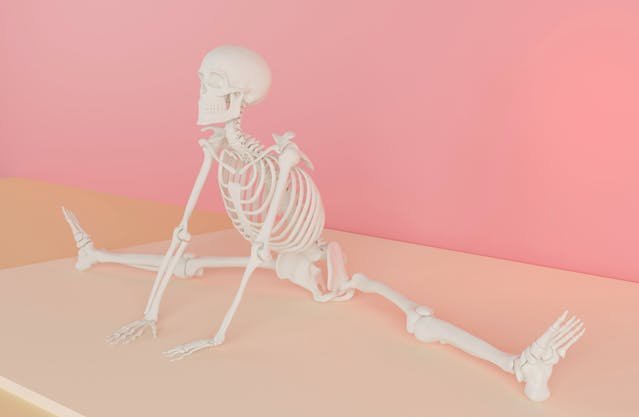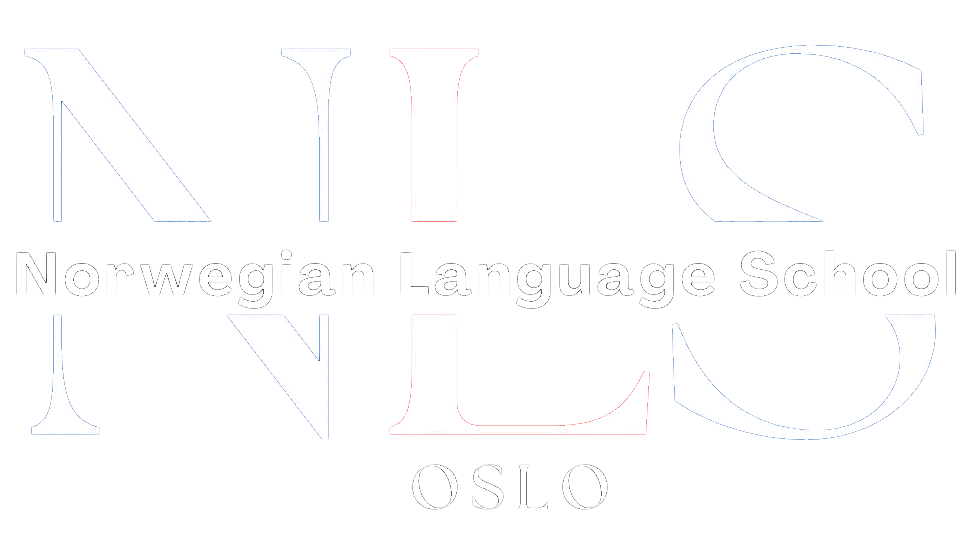Table of Contents
ToggleIntroduction
Understanding the external anatomy of the human body in Norwegian is a crucial skill for healthcare professionals, medical students, language learners, and anyone interested in the intersection of language and medicine in Norway. This comprehensive guide aims to provide an in-depth overview of the external structures of the human body, their Norwegian names, and their significance in both daily life and medical contexts.
The human body, with its intricate design and complex systems, has fascinated scientists, artists, and thinkers for centuries. In the context of modern medicine and healthcare, a thorough understanding of anatomy is fundamental. When we add the layer of language – specifically, Norwegian in this case – we create a powerful tool for communication, diagnosis, and patient care in Norway’s healthcare system.
This article will take you on a detailed journey through the external anatomy of the human body, providing you with the Norwegian terminology for each part. We’ll explore not just the major body regions, but also delve into the specific structures within each area, offering insights into their functions and medical significance. Whether you’re a medical professional looking to practice in Norway, a student preparing for studies in a Norwegian institution, or simply a language enthusiast with an interest in medical terminology, this guide will provide you with a solid foundation in Norwegian external anatomy vocabulary.
The Importance of Understanding External Anatomy in Norwegian
Before we dive into the specific anatomical terms, it’s crucial to understand why knowledge of external anatomy in Norwegian is so important:
- Medical Communication: In a healthcare setting, precise communication is vital. Using the correct Norwegian anatomical terms ensures clarity and prevents misunderstandings that could potentially lead to medical errors. Whether you’re describing symptoms, explaining a procedure, or documenting an examination, accuracy in terminology is paramount.
- Patient Care: When interacting with Norwegian-speaking patients, the ability to explain conditions, procedures, or instructions in their native language can significantly improve patient understanding and compliance. It also helps build trust and rapport, which are essential elements of effective healthcare.
- Medical Education: For students pursuing medical education in Norway, mastery of anatomical terms in Norwegian is not just beneficial – it’s essential. Textbooks, lectures, and clinical training will all use these terms, and proficiency in this vocabulary is crucial for academic success.
- Cultural Competence: Using Norwegian anatomical terms demonstrates respect for the local language and culture. This cultural sensitivity can enhance professional relationships with colleagues and improve patient satisfaction.
- Legal and Ethical Considerations: In medical documentation, consent forms, and other legal documents, the use of correct terminology is crucial. Misuse or misunderstanding of terms could have serious legal implications.
- Research: For those involved in medical research in Norway, familiarity with Norwegian anatomical terms is essential. It allows for better understanding of local research papers and facilitates collaboration with Norwegian researchers.
- International Collaboration: As medicine becomes increasingly global, the ability to bridge language gaps becomes more valuable. Understanding Norwegian anatomical terms can facilitate better collaboration with Norwegian healthcare professionals in international contexts.
- Emergency Situations: In emergency scenarios, quick and accurate communication can be life-saving. Knowing the correct terms for body parts and symptoms in Norwegian can help you respond more effectively in critical situations.
- Public Health Education: For those involved in public health initiatives in Norway, the ability to communicate anatomical concepts in Norwegian is crucial for developing effective health education materials and campaigns.
- Professional Development: For healthcare professionals, expanding your anatomical vocabulary in Norwegian can open up new career opportunities within Norway’s healthcare system and enhance your overall professional profile.
Now that we understand the importance of this knowledge, let’s explore the external anatomy of the human body in Norwegian, starting with the major body regions and then delving into more specific areas.
General Body Regions
The human body can be divided into several major regions in Norwegian:
- Hode og hals (Head and Neck)
- Kropp (Trunk, including brystkasse, mage, and bekken)
- Øvre ekstremiteter (Upper Extremities: armer og hender)
- Nedre ekstremiteter (Lower Extremities: bein og føtter)
Let’s explore each of these regions in detail.
Head and Neck (Hode og hals)
The head and neck region is one of the most complex areas of the human body, containing vital sensory organs and the brain. Let’s break it down into its component parts:
Head (Hode)
- Ansikt (Face)
- Panne (Forehead): The area above the eyes and below the hairline.
- Øyne (Eyes): The organs of vision.
- Øyebryn (Eyebrows): The hair above the eyes.
- Øyevipper (Eyelashes): The hair fringing the eyelids.
- Øyelokk (Eyelids): The covering that protects the eye.
- Nese (Nose): The organ of smell and part of the respiratory system.
- Nesebor (Nostrils): The external openings of the nose.
- Munn (Mouth): The opening through which food is taken in and vocal sounds are emitted.
- Lepper (Lips): The fleshy folds surrounding the mouth.
- Tenner (Teeth): The hard structures used for biting and chewing.
- Tunge (Tongue): The muscular organ used for tasting, swallowing, and speaking.
- Kinn (Cheeks): The fleshy side of the face below the eyes.
- Hake (Chin): The protruding part of the face below the mouth.
- Ører (Ears): The organs of hearing.
- Øreflipp (Earlobe): The soft, fleshy part at the bottom of the ear.
- Hår (Hair): The fine threads growing from the skin, especially on the head.
- Skalp (Scalp): The skin covering the top of the head.
Neck (Hals)
- Strupe (Throat): The front part of the neck.
- Adamseplet (Adam’s apple): The visible lump formed by the angle of the thyroid cartilage surrounding the larynx.
- Nakke (Nape): The back part of the neck.
Understanding the anatomy of the head and neck is crucial in many medical specialties, including neurology, ophthalmology, otolaryngology, and dentistry.
Trunk (Kropp)
The trunk, or torso, is the central part of the body to which the head and limbs are attached. It includes several important regions:
Chest (Brystkasse)
- Bryst (Chest): The front part of the body between the neck and the abdomen.
- Bryster (Breasts): The mammary glands on the upper front of the torso.
- Brystvorte (Nipple): The raised point in the center of each breast.
- Areola (Areola): The darkened area surrounding the nipple.
- Ribbein (Ribs): The curved bones that form the rib cage.
- Brystbein (Sternum): The flat bone in the middle of the chest.
Abdomen (Mage)
- Navle (Navel or Belly button): The depression or protrusion in the middle of the abdomen.
- Mage (Stomach area): The region between the chest and the pelvis.
- Øvre mage (Upper abdomen)
- Nedre mage (Lower abdomen)
Back (Rygg)
- Øvre rygg (Upper back): The region of the back corresponding to the chest.
- Nedre rygg (Lower back): The region of the back corresponding to the abdomen.
- Ryggrad (Spine): The series of vertebrae extending from the skull to the pelvis.
- Skulderblad (Shoulder blade): The flat triangular bone in the back of the shoulder.
Pelvis (Bekken)
- Hofter (Hips): The region on each side of the pelvis.
- Sete (Buttocks): The fleshy part of the body that you sit on.
- Lyske (Groin): The area between the abdomen and the thigh on either side of the body.
The trunk contains vital organs and is a focus area for many medical specialties, including cardiology, pulmonology, gastroenterology, and orthopedics.
Upper Extremities (Øvre ekstremiteter)
The upper extremities, consisting of the arms and hands, are essential for many daily activities and fine motor skills. Let’s explore their anatomy:
Arm (Arm)
- Skulder (Shoulder): The junction of the upper arm and the trunk.
- Armhule (Armpit): The hollow beneath the junction of the arm and shoulder.
- Overarm (Upper arm): The part of the arm between the shoulder and the elbow.
- Biceps (Biceps): The large muscle in the front of the upper arm.
- Triceps (Triceps): The large muscle in the back of the upper arm.
- Albue (Elbow): The joint between the upper arm and the forearm.
- Underarm (Forearm): The part of the arm between the elbow and the wrist.
- Håndledd (Wrist): The joint connecting the forearm to the hand.
Hand (Hånd)
- Håndflate (Palm): The inner surface of the hand.
- Fingre (Fingers): The five digits of the hand.
- Tommel (Thumb): The short, thick first digit of the hand.
- Pekefinger (Index finger): The finger next to the thumb, used for pointing.
- Langfinger (Middle finger): The longest finger, in the center of the hand.
- Ringfinger (Ring finger): The finger between the middle and little fingers.
- Lillefinger (Little finger or Pinky): The smallest finger, on the outer side of the hand.
- Knoker (Knuckles): The bony prominences at the finger joints.
- Negler (Nails): The hard protective plates at the tips of the fingers.
Understanding the anatomy of the upper extremities is crucial in orthopedics, rheumatology, and occupational therapy, among other fields.
Lower Extremities (Nedre ekstremiteter)
The lower extremities, comprising the legs and feet, are vital for mobility and balance. Let’s examine their structure:
Leg (Bein)
- Lår (Thigh): The part of the leg between the hip and the knee.
- Quadriceps (Quadriceps): The large muscle group at the front of the thigh.
- Hamstring (Hamstring): The group of muscles at the back of the thigh.
- Kne (Knee): The joint connecting the thigh to the lower leg.
- Kneskål (Kneecap): The flat, round bone at the front of the knee.
- Legg (Lower leg): The part of the leg between the knee and the ankle.
- Skinnlegg (Shin): The front part of the lower leg.
- Tykklegg (Calf): The fleshy back part of the lower leg.
- Ankel (Ankle): The joint connecting the leg to the foot.
Foot (Fot)
- Hæl (Heel): The back part of the foot.
- Fotbue (Arch): The curved middle part of the sole of the foot.
- Vrist (Instep): The upper surface of the foot.
- Tær (Toes): The five digits of the foot.
- Stortå (Big toe): The innermost and largest toe.
- Fotsåle (Sole): The bottom surface of the foot.
The anatomy of the lower extremities is particularly important in orthopedics, podiatry, and physical therapy.
Skin (Hud)
The skin is the largest organ of the body and plays a crucial role in protection, temperature regulation, and sensation. Understanding its structure is important in dermatology and many other medical fields.
- Epidermis (Epidermis): The outermost layer of the skin.
- Dermis (Dermis): The layer of skin beneath the epidermis, containing blood vessels, nerve endings, and various glands.
- Hypodermis (Hypodermis): The deepest layer of skin, primarily composed of fat and connective tissue.
Other important skin structures include:
- Hårfollikler (Hair follicles): The structures from which hair grows.
- Svettekjertler (Sweat glands): Glands that produce sweat to help regulate body temperature.
- Talgkjertler (Sebaceous glands): Glands that produce oil to lubricate the skin and hair.
Common Anatomical Terms and Directional References
Understanding common anatomical terms and directional references is crucial for precisely describing locations on the body:
- Lateral (Lateral) – Towards the side of the body
- Medial (Medial) – Towards the middle of the body
- Anterior (Anterior) – Front of the body
- Posterior (Posterior) – Back of the body
- Superior (Superior) – Upper part of a structure or towards the head
- Inferior (Inferior) – Lower part of a structure or towards the feet
- Proximal (Proksimal) – Closer to the point of attachment or the trunk of the body
- Distal (Distal) – Further from the point of attachment or the trunk of the body
- Superficial (Overfladisk) – Towards or on the surface of the body
- Deep (Dyp) – Away from the surface of the body
- Palmar (Palmar) – Relating to the palm of the hand
- Plantar (Plantar) – Relating to the sole of the foot
- Dorsal (Dorsal) – Relating to the back or upper surface
- Ventral (Ventral) – Relating to the front or lower surface
Body Movements
Understanding terms related to body movements is also important in describing physical examinations and patient conditions:
- Fleksjon (Flexion) – Bending a joint
- Ekstensjon (Extension) – Straightening a joint
- Abduksjon (Abduction) – Moving away from the midline of the body
- Adduksjon (Adduction) – Moving towards the midline of the body
- Rotasjon (Rotation) – Turning around an axis
- Pronasjon (Pronation) – Rotating the forearm so the palm faces downward
- Supinasjon (Supination) – Rotating the forearm so the palm faces upward
Cultural Considerations in Norwegian Healthcare
When using Norwegian anatomical terms, it’s important to be aware of certain cultural considerations:
- Formality: Norwegian society is generally less formal than many others. However, in medical settings, it’s best to err on the side of formality, especially with older patients.
- Gender neutrality: Norway is known for its progressive stance on gender equality. Be mindful of using gender-neutral language when appropriate.
- Directness: Norwegian communication style tends to be direct. While empathy is important, it’s also acceptable to be straightforward about medical issues.
- Patient autonomy: In Norway, there’s a strong emphasis on patient autonomy and informed consent. Be prepared to explain medical terms and procedures in detail.
- Holistic approach: Many Norwegians appreciate a holistic approach to healthcare. Be prepared to discuss lifestyle factors alongside medical treatments.
Practical Applications
Understanding Norwegian anatomical terms is crucial in various medical scenarios:
- Taking patient history: “Kan du peke på hvor smerten er?” (Can you point to where the pain is?)
- Explaining procedures: “Vi skal ta en røntgen av brystkassen din.” (We’re going to take an X-ray of your chest.)
- Giving instructions during examinations: “Kan du løfte venstre arm?” (Can you lift your left arm?)
- Discussing diagnoses: “Du har en betennelse i skulderleddet.” (You have inflammation in your shoulder joint.)
- Providing post-operative care instructions: “Unngå å belaste det opererte kneet i to uker.” (Avoid putting weight on the operated knee for two weeks.)
Conclusion
Mastering the Norwegian terms for external anatomy is a vital skill for anyone working in or studying healthcare in Norway. This comprehensive guide provides a solid foundation, but as with any specialized vocabulary, continuous practice and application are key to fully integrating these terms into your professional or academic life.
Remember that language learning, especially in a specialized field like medicine, is an ongoing process. Don’t be discouraged if you find some terms challenging at first. With regular use and exposure, these words will become second nature. Consider creating flashcards, practicing with colleagues, or using anatomical models to reinforce your learning.
By familiarizing yourself with these terms, you’re not only improving your language skills but also enhancing your ability to provide care, communicate effectively, and navigate the Norwegian healthcare system. This knowledge will serve you well whether you’re conducting a physical examination, explaining a diagnosis to a patient, or collaborating with Norwegian-speaking colleagues.
Moreover, understanding anatomical terms in Norwegian opens up a wealth of Norwegian medical literature and research, allowing you to stay current with local medical developments and contribute more effectively to the Norwegian healthcare community.
As you continue to build on this foundation, consider exploring more specialized anatomical terminology related to internal organs, systems, and specific medical specialties. The journey of learning medical Norwegian is ongoing, but with each term you master, you’re better equipped to provide high-quality, culturally competent care in Norway’s healthcare environment.
Practical Tips for Daily Use
- Start Small: Begin by incorporating a few Norwegian anatomical terms into your daily practice. Gradually increase as you become more comfortable.
- Create a Reference Sheet: Keep a quick reference sheet of commonly used terms handy during consultations or rounds.
- Practice Patient Communication: Role-play patient scenarios with colleagues, focusing on using Norwegian anatomical terms.
- Embrace Mistakes: Don’t be afraid to make mistakes. Most patients and colleagues will appreciate your effort to speak their language.
- Seek Feedback: Ask Norwegian-speaking colleagues to correct your pronunciation and usage. This feedback is invaluable for improvement.
- Use Visual Aids: When explaining anatomy to patients, use diagrams labeled in Norwegian to reinforce your verbal explanations.
- Immerse Yourself: Try to immerse yourself in Norwegian medical language as much as possible, even outside of work hours.
The Importance of Cultural Context
While learning anatomical terms is crucial, it’s equally important to understand the cultural context in which these terms are used in Norway. Norwegian healthcare culture places a strong emphasis on patient autonomy, shared decision-making, and a holistic approach to health.
When using anatomical terms with patients, be prepared to explain them in layman’s terms if necessary. Norwegians generally expect to be active participants in their healthcare, so clear communication is key. Additionally, be aware that some terms may have different connotations or levels of formality in Norwegian compared to English.
Continuing Your Journey
Learning Norwegian anatomical terms is just the beginning of your journey in mastering medical Norwegian. As you become more comfortable with these foundational terms, consider expanding your vocabulary to include:
- Physiological processes
- Common diseases and conditions
- Diagnostic procedures
- Treatment options
- Pharmacological terms
Remember, language learning is a lifelong process, especially in a field as dynamic as medicine. Stay curious, remain open to learning, and don’t hesitate to ask questions. Your efforts to master Norwegian medical terminology will not only enhance your professional capabilities but also deepen your connection to Norwegian culture and society.
By investing time and effort into learning these terms, you’re not just memorizing vocabulary – you’re acquiring a powerful tool that will enable you to provide better care, conduct more effective research, and build stronger professional relationships in the Norwegian healthcare system.
Whether you’re a medical student, a practicing healthcare professional, or a language enthusiast, your journey into Norwegian anatomical terminology is a valuable and rewarding endeavor. It opens doors to new opportunities, enhances your ability to serve patients, and enriches your understanding of the intricate relationship between language, culture, and healthcare.
As you continue to grow in your knowledge and application of Norwegian anatomical terms, remember that every new word learned is a step towards becoming a more effective, culturally competent healthcare provider in Norway. Your dedication to this learning process will undoubtedly benefit both you and the patients you serve.
In conclusion, mastering Norwegian anatomical terminology is a challenging but immensely rewarding journey. It requires persistence, practice, and patience, but the benefits – improved patient care, enhanced professional opportunities, and deeper cultural understanding – are well worth the effort. As you continue to learn and grow, take pride in your progress and remain committed to your goal of providing the best possible care to Norwegian-speaking patients. Your efforts are not just about learning a language; they’re about building bridges, improving healthcare outcomes, and embracing the rich tapestry of Norwegian medical culture.
Norwegian A1-A2
The course, called Norwegian A1-A2, is an online program designed to teach you Norwegian grammar and vocabulary. You’ll engage with a variety of materials and topics including the opportunity to converse with a Norwegian teacher. All interactions with the teacher are conducted online. The curriculum covers essential Norwegian grammar and vocabulary, as well as topics like family, everyday life, education, working life, traditions, leisure activities, and much more. Who is the course for? This course is ideal for anyone starting to learn Norwegian at the A1 or A2 levels. Whether you’re a complete beginner or you already know a little Norwegian, this course is suitable for you. What do you receive? Access to the Norwegian A1-A2 course. A 1-hour online conversation with a teacher once per month. Numerous written and oral assignments. Information on grammar, spelling, vocabulary, and sentence structure. Tips on additional resources to enhance your Norwegian learning.









